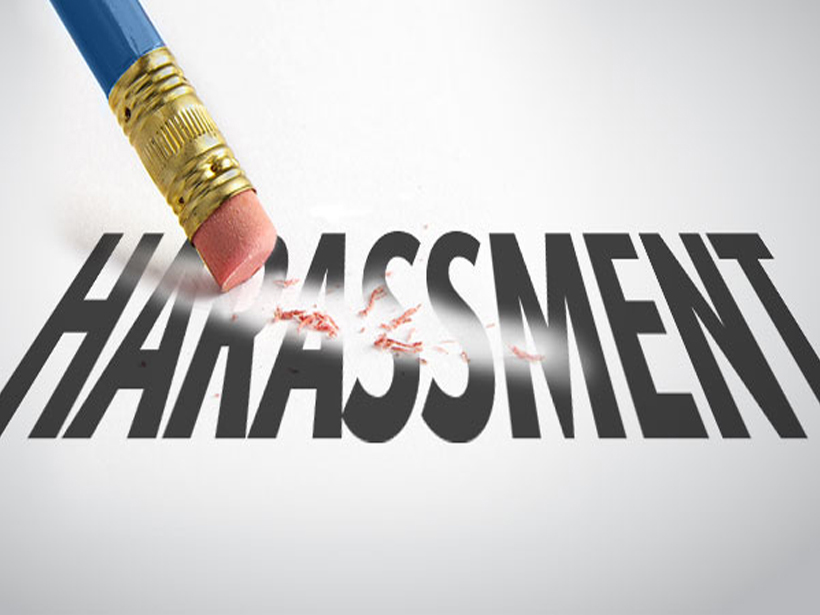The definition of research misconduct should include sexual harassment of students, employees, or colleagues. This proposal is one of many solutions to the problem that were discussed at a 9 September workshop convened by the American Geophysical Union (AGU) entitled “Sexual Harassment in the Sciences: A Call to Respond.”
In the wake of several high-profile sexual harassment cases within the last 2 years across the sciences, more than 60 leaders in science, government agencies, and professional societies gathered in Washington, D. C., to talk about the causes and prevalence of sexual harassment and assault in research institutions and other scientific settings and to begin to draft solutions.
The American Association for the Advancement of Science (AAAS), the American Chemical Society, the American Geosciences Institute, the Association for Women Geoscientists, and the Earth Science Women’s Network (ESWN) joined AGU as cosponsors of the workshop. The National Science Foundation funded the event.
How We Got Here
Students may risk retaliation against their careers if they call out or report harassment.
The workshop began with discussions about how the master-apprentice relationship between students—particularly those in graduate school—and their scientific advisers has the potential to set the stage for harassment and allow it to perpetuate, workshop speaker Erika Marín-Spiotta told Eos after the event. (To encourage attendees to speak candidly about this sensitive subject, media were not invited to attend the workshop. Moreover, participants agreed to refrain from live tweeting or otherwise reporting in real time.)
Students may risk retaliation against their careers if they call out or report harassment, noted Marín-Spiotta, who is a biogeochemist at the University of Wisconsin–Madison and a member of the leadership board of ESWN.
Harassment and Fieldwork
Fieldwork tends to exacerbate the harassment problem, she added. Students may be isolated from their community and from their friends and often don’t have anyone to turn to.
Anthropologist Kathryn Clancy of the University of Illinois at Urbana-Champaign—who was also a workshop speaker—and her colleagues recently conducted a survey of more than 650 scientists about sexual harassment and assault during fieldwork. The researchers reported in PLOS One in July 2014 that 64% of respondents said they had experienced sexual harassment in the field; 22% had experienced sexual assault. Women in training positions were often the targets; scientists above them in the hierarchy of the field site often committed the offenses, the team found. With regard to men who reported experiencing harassment and assault, perpetrators tended to be peers rather than superiors.
At the workshop, participants also discussed the “cult of the celebrity scientist,” which makes harassment more likely to take place and to go unpunished, Marín-Spiotta said. “Universities are really loath to do anything if the person who is being accused is bringing a lot of fame, or especially a lot of research funding, to the university,” she explained.
Less Heard Voices
It’s important not to forget especially marginalized communities, such as women of color, Clancy told Eos, recalling a concern she raised at the workshop.
She currently studies how women of color experience sexual harassment in the sciences. In not-yet-published research, Clancy has found that “the degree of negative experiences [women of color] have [is] relatively far greater” than that of white women.
“The degree of negative experiences [women of color] have [is] relatively far greater.”
“I do think a lot of people [at the workshop] did a lot of hard thinking at that moment” when she presented her research, Clancy said.
She hopes that other researchers and leaders will embrace an “intersectional” approach—considering not only gender but also race when thinking about how to address sexual harassment in the sciences.
“Women of color have been pointing this out for decades,” Clancy said. She emphasized that as the conversation continues, researchers need to promote a climate in which women of color can take a leading role in the conversation.
Possible Solutions
Throughout the workshop, attendees and speakers discussed possible solutions tailored to different settings, such as on campus, in the field, or at professional meetings, Marín-Spiotta said.
Providing funding to graduate students that is independent of a particular adviser or lab might help combat harassment, some workshop attendees suggested. This way, if a student had a negative experience in a research group or lab, she could move and work somewhere else more easily.
Participants also considered classifying sexual harassment as a form of research misconduct to discourage wrongdoing, Marín-Spiotta said. Funding agencies already punish universities if scientists abuse data, but scientists don’t get punished “if they abuse people,” she told Eos. “Institutions aren’t going to do anything until they’re afraid of losing funding,” she continued.
Further Action
Looking beyond the workshop, which she also attended, AGU CEO and executive director Christine McEntee said her organization and its collaborators now “have a responsibility to figure out a really strong course of action” to eradicate sexual harassment in the sciences.
She told Eos that she has experienced sexual harassment—which she regards as “unacceptable”—throughout her career. “It shouldn’t be happening,” she said.
Eric Davidson, AGU’s president-elect, also took part in the workshop. “It’s our responsibility to provide members, employees, and constituents with the awareness and tools needed to create an inviting, safe culture for science,” he said.
By the end of 2016, the organizations that cosponsored the workshop intend to release a set of guiding principles to help scientific societies, academic institutions, and other organizations improve workplace climate, better respond to sexual harassment, and better support its victims.
—JoAnna Wendel, Staff Writer
Citation:
(2016), AGU-sponsored workshop targets sexual harassment in the sciences, Eos, 97, https://doi.org/10.1029/2016EO059651. Published on 20 September 2016.
Text © 2016. The authors. CC BY-NC-ND 3.0
Except where otherwise noted, images are subject to copyright. Any reuse without express permission from the copyright owner is prohibited.

